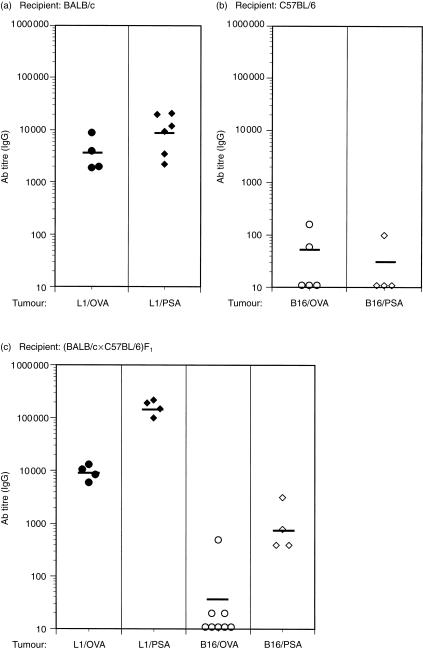Figure 5.
Line 1, but not B16, tumours generate high antigen-specific antibody titres in syngeneic and semiallogeneic mice. BALB/c (a) or C57BL/6 (b) mice were injected, respectively, with line 1/ovalbumin (OVA) (•) or line 1/prostate-specific antigen (PSA) (♦), or with B16/OVA (○) or B16/PSA (◊) tumour cells. Filled symbols represent transfected line 1 cells whereas open symbols denote antigen-expressing B16 tumours. (BALB/c × C57BL/6)F1 mice (c) were also injected with line 1/OVA (•), B16/OVA (○), line 1/PSA (♦) or B16/PSA (◊). After 16–21 days of tumour growth, mice were bled, and serum samples were collected and analysed for antigen-specific immunoglobulin G (IgG) using anti-OVA- or anti-PSA-specific enzyme-linked immunosorbent assays (ELISAs). End-point titres were determined by the inverse dilution that gave an absorbance (A) reading of twice background levels. Each point represents an individual mouse and the bar depicts the geometric mean of all mice assayed. (a) Represents pooled data from two separate experiments. Similarly, the B16/OVA column in (c) represents pooled data from two separate experiments. Antibody titres in F1 mice injected with line 1/OVA tumours were significantly higher than antibody titres of mice injected with B16/OVA tumours; P = 0·008 by the Mann–Whitney U-test. Similarly, antibody titres in mice injected with line 1/PSA were significantly higher (P = 0·02) than those titres of mice injected with B16/PSA.

